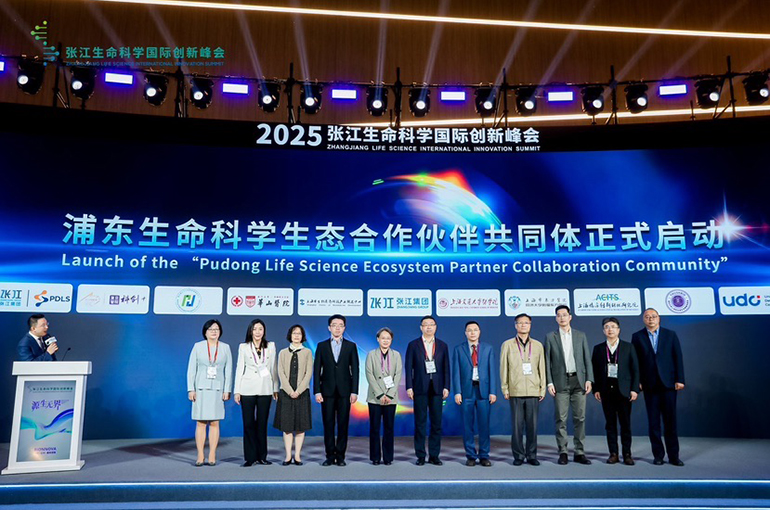 Shanghai's Pudong New Area Launches Life Sciences Alliance to Boost Biomedical Innovation
Shanghai's Pudong New Area Launches Life Sciences Alliance to Boost Biomedical Innovation(Yicai) April 10 -- Pudong New Area unveiled the Ecological Partnership Community for Life Sciences to crack industrial business collaboration barriers and jointly promote the innovative development of the biomedical industry in the pilot free trade zone in Shanghai.
Members of the alliance, launched at the opening main forum of the Zhangjiang Life Science International Innovation Summit yesterday, include Zhangjiang Group, Shanghai Biomedical Industry Promotion Center, the Academy for Clinical Innovation and Translation of Shanghai, Shanghai Jiao Tong University School of Medicine, Huashan Hospital Affiliated to Fudan University, and Shanghai East Hospital.
The biomedical industry is one of the three leading industries Shanghai focuses on developing. Pudong's Zhangjiang has become a cluster for related enterprises and one of the regions with the most complete biomedical supply chains, the best ecosystem, the most concentrated talent pool, and the most active innovation environment in China.
The biomedical industry in Zhangjiang "accelerated the output of innovative achievements and entered the harvest season in recent years," Liu Gang, deputy general manager of Pudong Life Sciences Industry Development, established last May, told Yicai.
The Pudong Life Science Industry Service Ecosystem Map 1.0 of Pudong Life Sciences Industry Development includes professional technical service institutions, enterprises, and carriers covering the entire biomedical industry cycle from research and development to production. Under its guidance, the upstream and downstream of the local supply chain can achieve more precise and efficient cooperation and docking.
The biomedical industry in Pudong New Area rose 7.9 percent to CNY410 billion (USD55.8 billion) last year from the previous year, Xu Lai, deputy secretary of the party leadership of the zone, said at the forum.
Since 2019, biomedical enterprises in the Pudong New Area have obtained approval for 21 Category 1 innovative drugs and 31 innovative medical devices, including two drugs and four devices this year, Xu noted. In addition, three of the six chimeric antigen receptor T-cell therapies approved in China came from the zone, she added.
Editors: Tang Shihua, Martin Kadiev